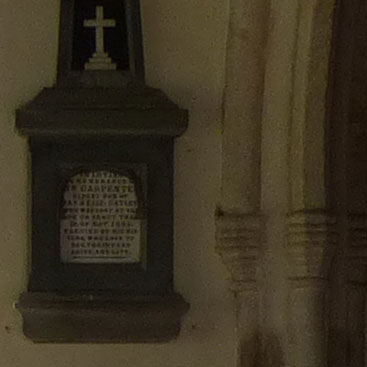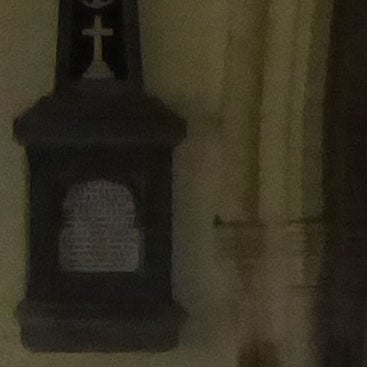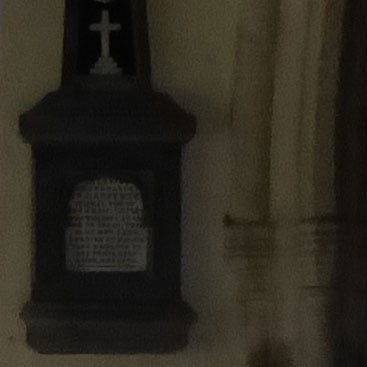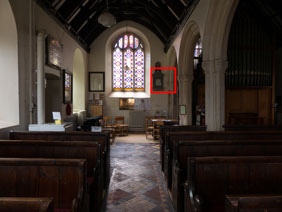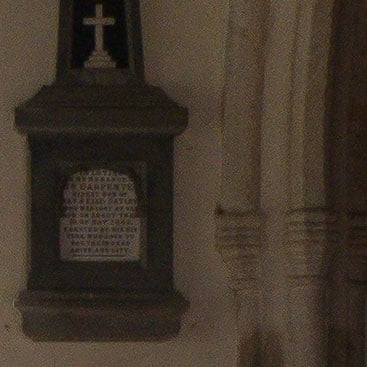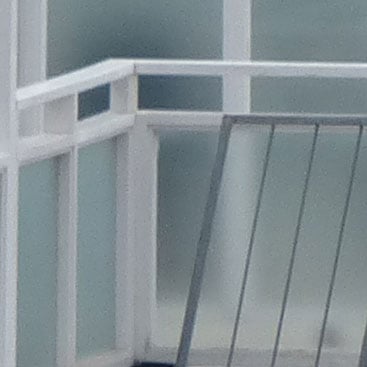Panasonic Lumix FZ200 review
-
-
Written by Ken McMahon
Quality
Panasonic FZ200 vs Canon SX50 HS Noise JPEG
The image above was taken with the Panasonic Lumix FZ200. The camera was set to Aperture priority mode with the aperture set to f4 and the sensitivity to 100 ISO. The Lumix FZ200 metered an exposure of 1.6 seconds at f4. To produce a comparable image on the Canon PowerShot SX50 HS I set exposure compensation to +1EV to produce an exposure of 1 second at f4 at 80 ISO. I should note that the shutter speed limit in Aperture priority mode on the SX50 HS is 1 second and that the 100 ISO exposure was also 1 second, falling to 0.6s at 200 ISO so, had it been able to, the SX50 HS would most likely have set 1.2s for the 80 ISO exposure. One way around this limitation is to set manual exposure mode which allows you to select shutter speeds up to 15 seconds. But there’s a catch. Even in Manual, you can only select exposures longer than a second at the base 80 ISO setting. It’s a small thing, but if you do a lot of night shooting and long exposure photography it’s worth knowing about. Turning to the crops, as we saw in the outdoor test shots the Lumix FZ200 has some visble noise at its base 100 ISO setting, in low light at an exposure in excess of a second it’s a little worse here than it would be outdoors with a shorter exposures. You don’t have to look too hard to see the grainy texture in the wall and if it weren’t for the slight noisiness the text in the memorial panel and other fine detail would be a little clearer. That said, I think this is a very respectable result for a compact MOS sensor, it’s on a par with the 80 and 100 ISO PowerShot SX50 HS crops, and there’s no way you’d spot this at anything less than 100 percent view. At 200 ISO things are looking a little more granular and the text is a little less readable and the step up to 400 ISO shows a deterioration of about the same amount. Now the text is no longer legible and the once sharp edges of the memorial panel are beginning to crumble a little. $00 ISO still looks pretty good though and I reckon you’d just about get away with full-sized prints and large screen display at this sensitivity setting. You can’t really say the same for 800 ISO, though, and this is the point at which the FZ200’s processing really loses the battle with the noise being produced by the sensor. On a positive note though, the FZ200’s colour balance and saturation remains strong well up the sensitivity range to 1600 ISO. By now, though, the game is really up and the settings beyond 1600 ISO are more noise than image data. To sum up, I’d say that the FZ200 produces good quality images at the low end of the sensitivity scale despite low level noise. Processing manages the noise well up to 400 ISO with 800 ISO a good bet for smaller than full size display and 1600 ISO for must have emergency shots. Like the PowerShot SX50 HS, the Lumix FZ200 also has a low-light composite mode. Hand Held Night shot takes a fast sequence with exposure and sensitivity set automatically and combines them into a single shot. In this instance the FZ200 chose 800 ISO which resulted in a shutter speed of 1/8th at f2.8. The camera was still on the tripod for this shot with stabilisation off, but you can shoot hand-held at the wide angle setting with stabilisation on and get sharp results. As you can see from the crop, while it’s still noisy, the FZ200’s Hand Held Night Shot crop is a visible improvement on the single frame 800 ISO crop. Compared with the crops from the Canon PowerShot SX50 HS, once again, there’s not much to separate these two 12 Megapixel sensors, though in its favour the FZ200 made a better job of the exposure, producing slightly warmer results. At 100 ISO I’d say the FZ200 crop looks slightly clumpier and the text isn’t quite so readable. At 200 ISO the Canon SX50 HS crop also looks to be slightly cleaner. From 400 ISO up, the noise looks a little different, but has much the same effect. I think it’s fair to say that at the lower ISO settings the SX50 HS has a small noise advantage, but from 400 ISO upwards there’s very little, if anything, in it. To find out how much of a role processing plays in keeping noise at bay in these crops take a look at my Lumix FZ200 RAW noise results page to see just how much noise is present behind the scenes. Or head over to my Lumix FZ200 sample images to see some more real-life shots in a variety of conditions.
|
|
Panasonic FZ200 vs Canon SX50 HS RAW quality
|
Panasonic Lumix FZ200 RAW |
Canon PowerShot SX50 HS RAW | |
 |  | |
f4, 100 ISO |
f4, 80 ISO | |
 |  | |
f4, 100 ISO |
f4, 80 ISO | |
 |  | |
f4, 100 ISO |
f4, 80 ISO | |
 |  | |
f4, 100 ISO |
f4, 80 ISO |
Panasonic Lumix FZ200 results : Quality / RAW quality / Noise / RAW Noise
Panasonic FZ200 vs Canon SX50 HS Noise RAW
The image above was taken with the Panasonic Lumix FZ200. The camera was set to Aperture priority mode with the aperture set to f4 and the sensitivity to 100 ISO. The Lumix FZ200 metered an exposure of 1.6 seconds at f4. To produce a comparable image on the Canon PowerShot SX50 HS I set exposure compensation to +1EV to produce an exposure of 1 second at f4 at 80 ISO. I processed both sets of files in Adobe Camera RAW using identical settings: Sharpening at 70 / 0.5 / 36 / 10, Luminance and Colour Noise Reduction both set to zero, and the Process to 2012 with the Adobe Standard profile. To further reduce any distracting visual differences between the crops I also set custom white balance to 4500K and tint to 0. These settings were chosen to reveal the differences in sensor quality and isolate them from in-camera processing. The high degree of sharpening with a small radius enhances the finest details without causing undesirable artefacts, while the zero noise reduction unveils what’s really going on behind the scenes – as such the visible noise levels at higher ISOs will be much greater than you’re used to seeing in many of my comparisons, but again it’s an approach that’s designed to show the actual detail that’s being recorded before you start work on processing and cleaning it up if desired. There are no big surprises here and these Raw crops pretty much confirm what we saw in the JPEG noise results. Cast your eye down the two columns and you’ll notice a marginal difference with the lumix FZ200 showing slightly higher levels of noise throughout the sensitivity range. It’s not enough to make a massive difference, but at the lower ISO sensitivities, once the files are processed to JPEG, it does mean the Canon PowerShot SX50 HS has a slight edge with cleaner detail. As you progress up the sensitivity range the noise in both sensors quickly becomes very apparent, and by 800 ISO and beyond, though the Canon SX50 HS still enjoys a slight advantage, noise levels are so high that, once processing has been applied there’s little if anything between them. For most people, this won’t make much difference one way or the other. But if you’re after the best quality you can squeeze from these RAW files, the Canon SX50’s sensor provides a little more for you to work with. Now head over to my Panasonic Lumix FZ200 sample images to see some more real-life shots in a variety of conditions, or head straight for my Verdict.
|
|
Panasonic FZ200 vs Canon SX50 HS quality
|
Panasonic Lumix FZ200 |
Canon PowerShot SX50 HS | |
 | 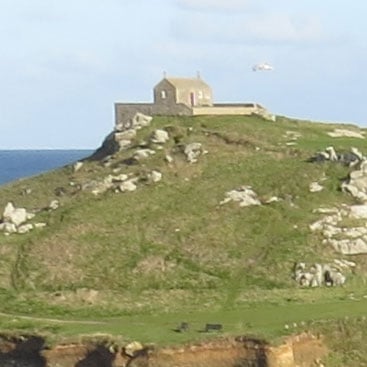 | |
f4, 100 ISO |
f4, 80 ISO | |
 |  | |
f4, 100 ISO |
f4, 80 ISO | |
 |  | |
f4, 100 ISO |
f4, 80 ISO | |
 |  | |
f4, 100 ISO |
f4, 80 ISO |
Panasonic FZ200 vs Canon SX50 HS quality at 365mm equivalent
Panasonic Lumix FZ200 |
Canon PowerShot SX50 HS | |
 | ||
25-600mm at 65.8mm (366mm equiv) f5.6, 100 ISO |
4.3-215mm at 65.4mm (365mm equiv) f5.6, 80 ISO | |
 |  | |
25-600mm at 65.8mm (366mm equiv) f5.6, 100 ISO |
4.3-215mm at 65.4mm (365mm equiv) f5.6, 80 ISO | |
 |  | |
25-600mm at 65.8mm (366mm equiv) f5.6, 100 ISO |
4.3-215mm at 65.4mm (365mm equiv) f5.6, 80 ISO | |
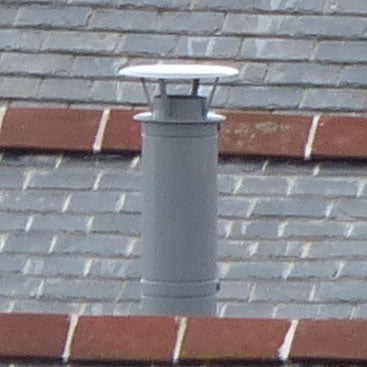 |  | |
25-600mm at 65.8mm (366mm equiv) f5.6, 100 ISO |
4.3-215mm at 65.4mm (365mm equiv) f5.6, 80 ISO |
Panasonic Lumix FZ200 results : Quality / RAW quality / Noise / RAW Noise


